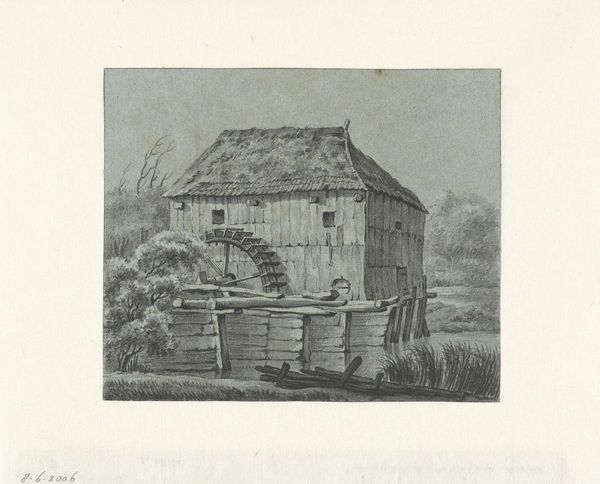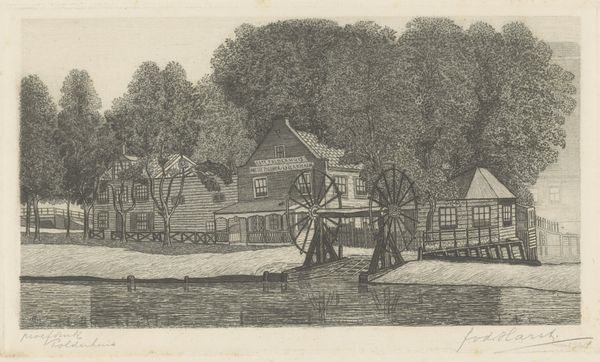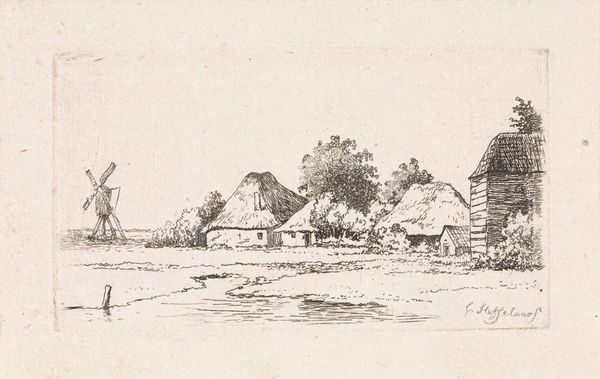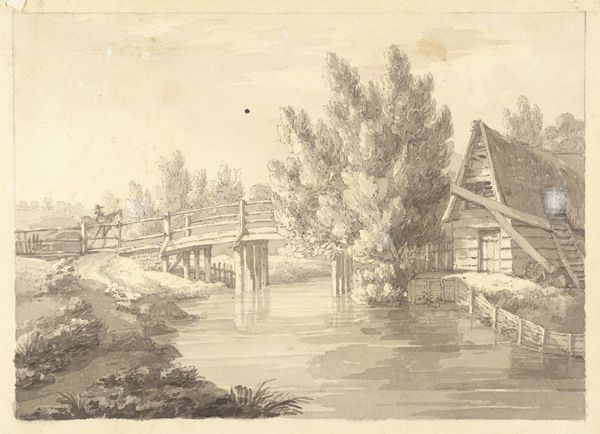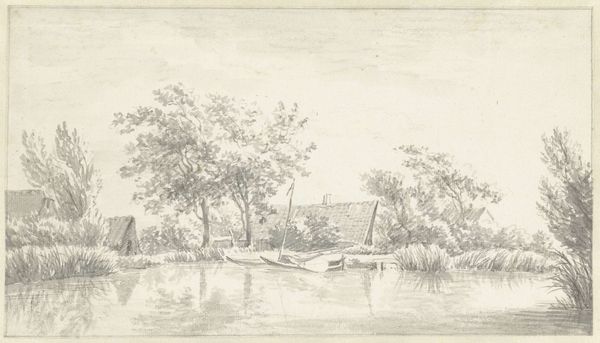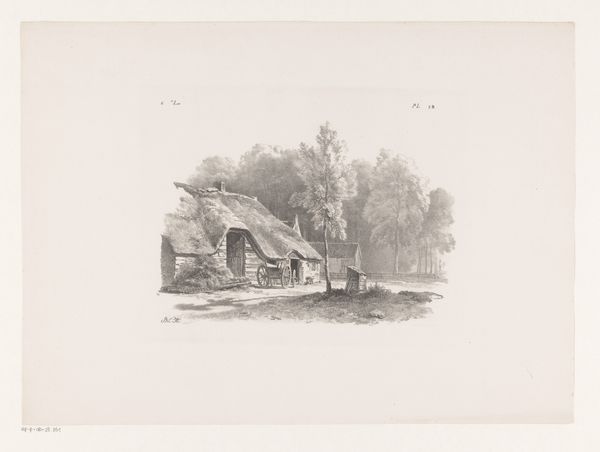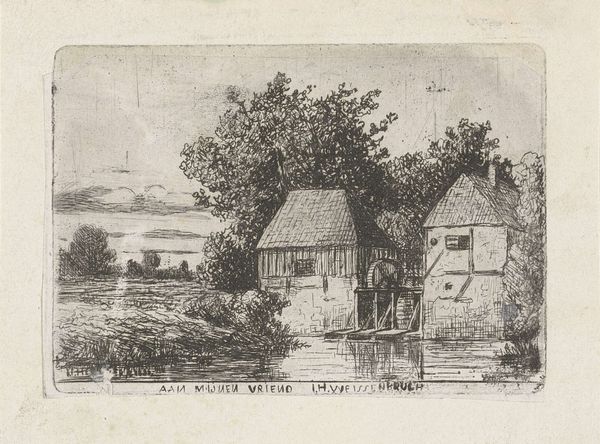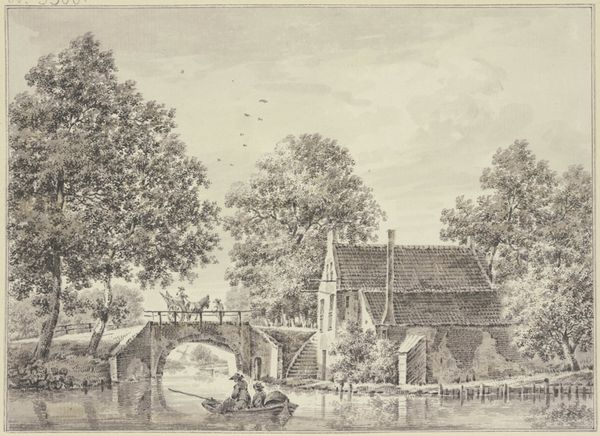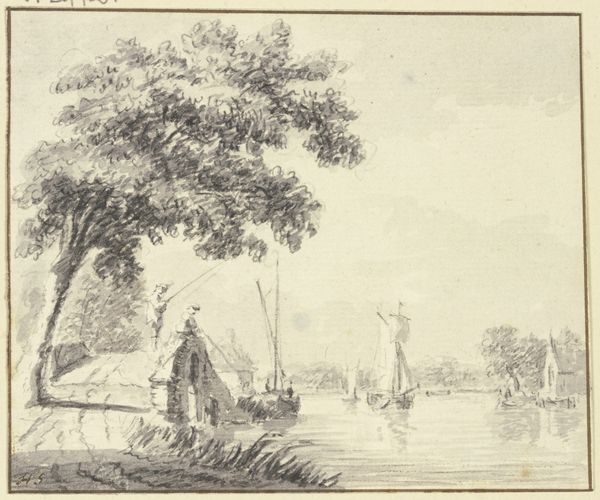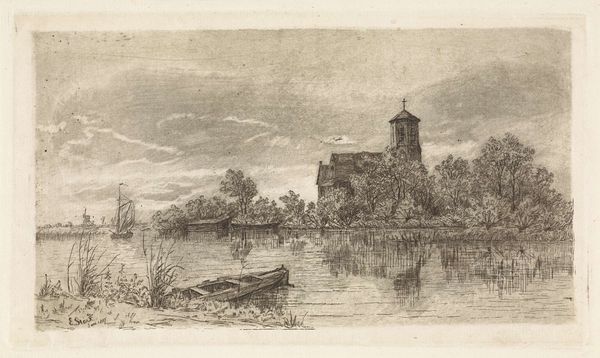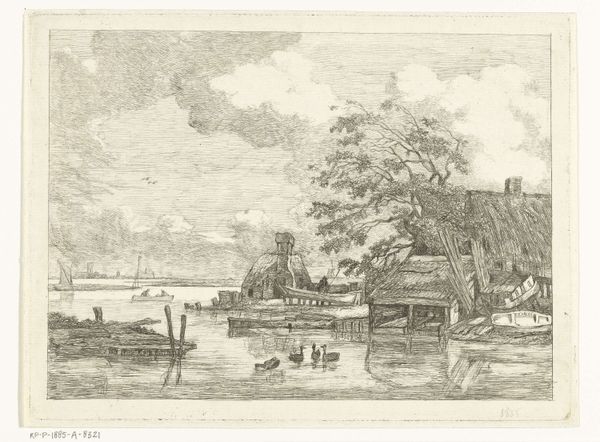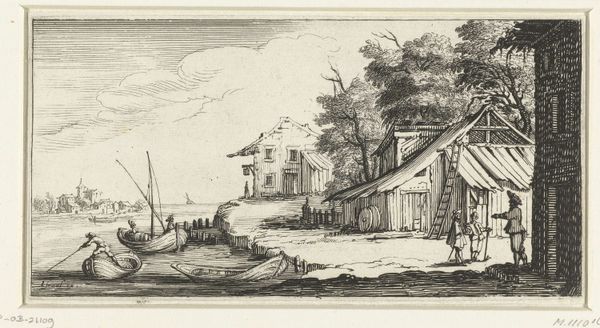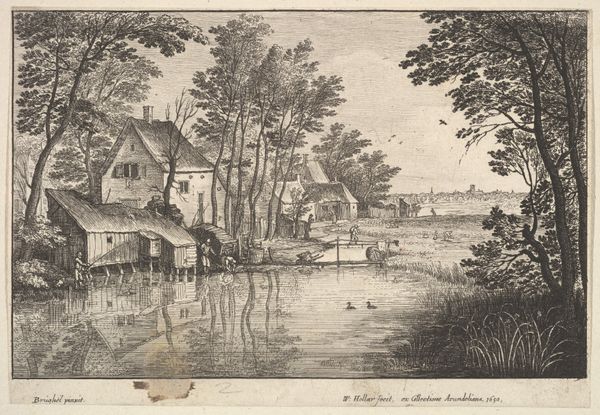
drawing, pen
#
drawing
#
old engraving style
#
traditional media
#
landscape
#
romanticism
#
pen
#
realism
Dimensions: height 222 mm, width 307 mm
Copyright: Rijks Museum: Open Domain
Gerrit Hulseboom’s depiction of the Watermolen Den Haller in Diepenheim invites us to consider the enduring symbolism of watermills. Here, the mill stands as more than just a structure, it's a nexus of nature and human ingenuity. Water, the lifeblood of the earth, turns the wheel, symbolizing transformation and the cyclical nature of existence. This motif echoes through time, from ancient Near Eastern depictions of the “wheel of life” to the water-powered devices in Renaissance diagrams, reflecting humankind's quest to harness nature's energy. One might consider its psychological weight, reflecting our collective desire to control and understand the forces that shape our world. But the presence of the natural world reminds us of the futility of this desire, in which mankind, despite their best efforts, will never fully overcome nature. Ultimately, the image of the watermill transcends its practical function. It serves as a potent symbol of cultural memory, reminding us of our continuous dialogue with nature. These symbols re-emerge, each time imbued with new cultural weight, inviting us to contemplate our place within the grand, cyclical narrative of time.
Comments
No comments
Be the first to comment and join the conversation on the ultimate creative platform.
